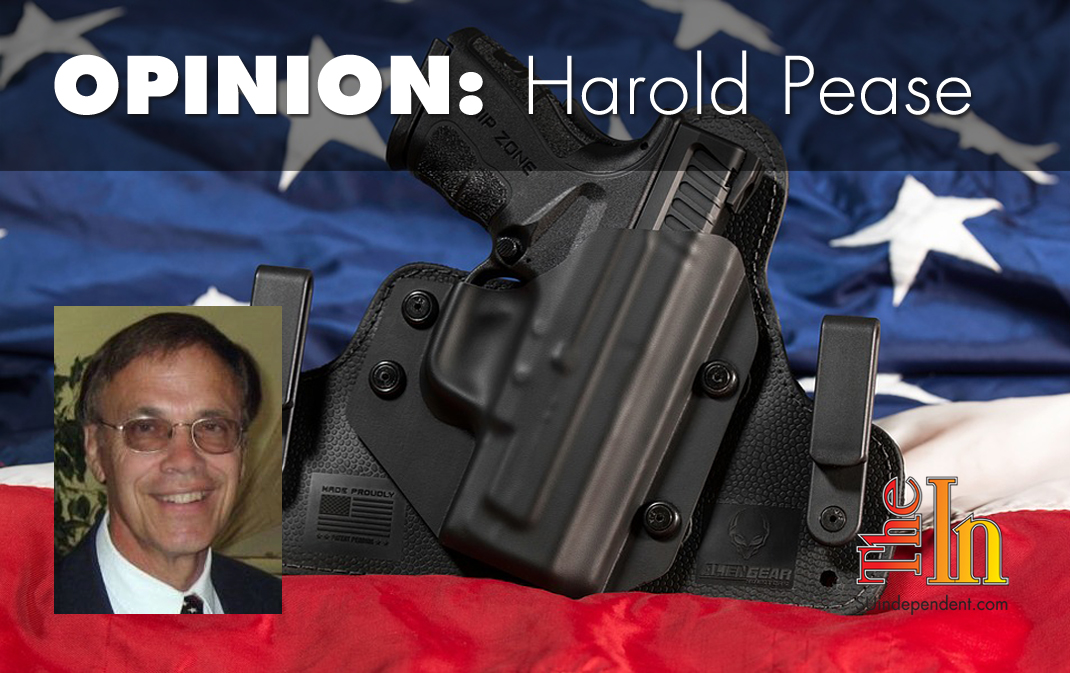 Let teachers protect their students
Let teachers protect their students
In our thousands of public schools there have been 11 mass shootings since 2000: elementary (3), high schools (3) and colleges (5). These follow with year and number of deaths: 2005 Red Lake Senior High School (7), 2006 West Nickel Mines School (6), 2007 Virginia Tech (33), 2008 Northern Illinois University (6), 2012 Oikos University (7), 2012 Sandy Hook Elementary School (28), 2013 Santa Monica College (6), Marysville Pilchuck High School (5), 2015 Umpqua Community College (10), 2017 Rancho Tehama Reserve Elementary School (6), and now Marjory Stoneman Douglas High School in Parkland, Florida (17) Feb. 14 .
Some mass shooters carried more than one gun, and nine had handguns. In the deed, seven preferred the handgun, one used a shotgun, and three used AR-15s. All but three shooters committed suicide when confronted with police. Teachers or staff were victims in all but one of the 11 mass shootings.
Two things were common in all 11 mass shootings: It took too much time for police to confront shooters, and schools were targeted primarily because they were “gun free.” A third element, common in 10 shootings, is that it took a gun to stop a gun. All three could have been resolved more promptly had teachers, and others with student responsibilities, had the right to protect themselves and those under their care.
In the Umpqua Community College massacre, “Just one gun somewhere near the premise could have been enough,” one victim told her father in the hospital. The shooter had eight minutes of unrestrained killing time before police arrived after 911 notification and before he took his life, ending the massacre. If but one armed concealed-weapons permit holder had been in the classrooms or close by, he or she could have saved several minutes of indiscriminate slaughter. In the recent “Valentines Day” massacre of 17 high school students in Parkland, the killer finished his slaughter and had enough time in addition to get half a mile off campus before being confronted by police.
This is not to suggest that every teacher must participate, only those who wish to. Hundreds of regular permit-holding citizens in each city or county where the slaughters occurred already carry concealed weapons everywhere except in “gun free zones” (sometimes called “free kill zones”), many teachers among them. I was one of them.
Law enforcement normally see permit holders as an asset, the ultimate backup should they need extra help, and also because cops know they can’t be everywhere at the same time, as some Marjory Stoneman Douglas High School students learned the hard way. Why not let permit holders carry weapons on school grounds as well, allowing them to be an asset of protection wherever they are? Teachers and staff are on the scene, care for their students, are a trusted profession in society, and most importantly are themselves threatened. It would cost the schools nothing. Chances are that every college has several concealed weapons permit holders among its faculty and staff already.
Permit holders are among our finest citizens. Obtaining a concealed weapons permit requires a thorough investigation, a near perfect record from law enforcement, a stated need to carry, and some training. Normally they are older, more mature folks, and in the case of teachers, society already trusts their young people with them several hours a day. They are already on the scene when a policeman could not possibly be. What a deterrent to a would-be killer if he knew schools are not so vulnerable.
“Gun free” zones clearly do not work as most massacres in the United States happen in them. Rather, than deter, and they entice killers by giving them access to large groups of unprotected, good, and innocent victims — often children. Presently, the only hope that a teacher, wishing to protect his or her students, has is to hide them or lock the classroom.
In my classroom of many years, there was one door opening outwardly that required manually pulling a rubber block on the door from inside the classroom to lock the room. Everyone inside, including me, was set up to be a victim unless someone could get to the rubber block before a shooter entered the classroom. It remains this way. Better yet, a teacher or staff member inside with a concealed weapons permit need only pull out a weapon from pocket or purse and fire a couple of rounds at a very surprised — and then very dead — child killer.
Elected officials, please give teachers and staff a fighting chance to survive. Teachers have done nothing that should justify disarming us or fearing us and thus leaving us with virtually no hope of survival. You may answer, “We can’t just let anyone have a weapon of mass destruction!” You already do! Anyone 16 and older can drive an automobile, which is decidedly a weapon of mass destruction — even if he might commit crimes with it.
In the case of the 11 mass school shootings in this century, the killers did their deeds in locations they supposed to be “gun free” and ceased their rampage, in all but the most recent massacre, only when confronted with another gun. Next time, let that person be a teacher or staff member with a concealed weapon and a vested interest in his safety and the safety of those around him, whose immediate action would allow so many more students to live.
The viewpoints expressed above do not necessarily reflect those of The Independent.
Articles related to “Let teachers protect their students”
Teachers with guns in Utah: It’s better to keep them secret from parents
How to submit an article, guest opinion piece, or letter to the editor to The Independent
Do you have something to say? Want your voice to be heard by thousands of readers? Send The Independent your letter to the editor or guest opinion piece. All submissions will be considered for publication by our editorial staff. If your letter or editorial is accepted, it will run on suindependent.com, and we’ll promote it through all of our social media channels. We may even decide to include it in our monthly print edition. Just follow our simple submission guidelines and make your voice heard:
—Submissions should be between 300 and 1,500 words.
—Submissions must be sent to editor@infowest.com as a .doc, .docx, .txt, or .rtf file.
—The subject line of the email containing your submission should read “Letter to the editor.”
—Attach your name to both the email and the document file (we don’t run anonymous letters).
—If you have a photo or image you’d like us to use and it’s in .jpg format, at least 1200 X 754 pixels large, and your intellectual property (you own the copyright), feel free to attach it as well, though we reserve the right to choose a different image.
—If you are on Twitter and would like a shout-out when your piece or letter is published, include that in your correspondence and we’ll give you a mention at the time of publication.



